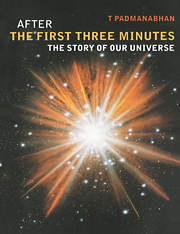3 - Observing the universe
Published online by Cambridge University Press: 02 November 2009
Summary
The cosmic rainbow
In chapter 1, we did a rapid survey of the universe, listing its contents, and in chapter 4, we plan to discuss these objects in more detail. You may wonder how such a detailed picture about the universe has been put together. This has been possible because we can now observe the universe in a wide variety of wavebands of the electromagnetic spectrum, and virtually every cosmic object emits radiation in one band or another. In this brief chapter, we shall have a rapid overview of how these observations are made. While describing the observational techniques, we will also mention briefly the astronomical objects which are relevant to these observations. These objects are described in detail in the next chapter, and you could refer back to this cha46 pter after reading chapter 4.
It is rather difficult to ascertain when the first astronomical observation was made. Right from the days of pre-history, human beings have been wondering about the heavens and making note of the phenomena in the skies. The earliest observations, needless to say, were made with the naked eye. With the advent of the optical telescope, one could probe the sky much better and detect objects which were too faint to be seen with the naked eye. As the telescopes improved, the quality of these observations increased.
There is, however, an inherent limitation in these early observations. All these observations were based on visible light. We now know that visible light is an electromagnetic wave whose wavelength is in a particular range.
- Type
- Chapter
- Information
- After the First Three MinutesThe Story of Our Universe, pp. 46 - 64Publisher: Cambridge University PressPrint publication year: 1998

